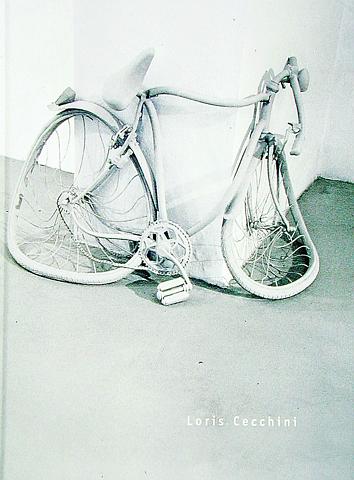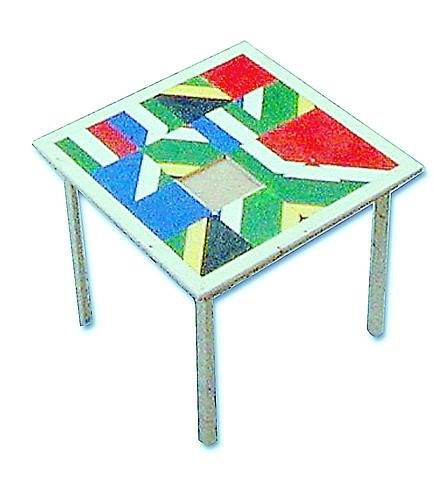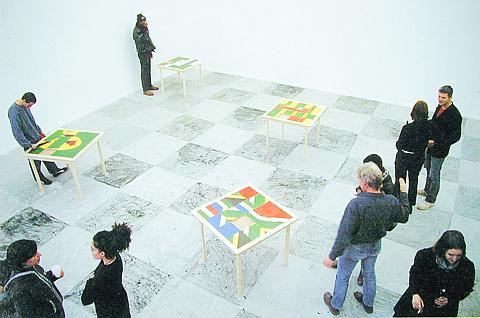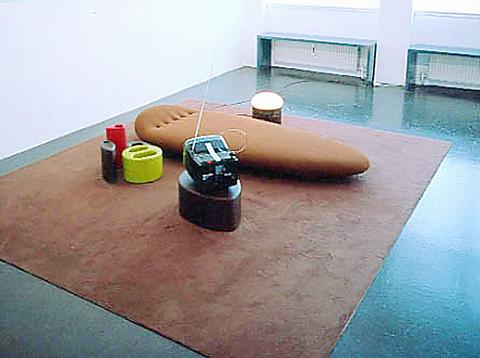With 31 artists from 20 countries set to participate in the upcoming Taipei Biennial, the city art scene is set to show its sophistication and diversity. And to let the global art community know that it's come a long way since hosting a more limited biennial in 1998.
Organized by the Taipei Fine Arts Museum, the festival will jump outside the limited East Asian scope of its predecessor, dubbed "Site of Desire." The effort of the Taipei museum to broaden and reach out has always been a goal of its management, which has continually pursued making the museum an international contender.
Acclaimed curator Jerome Sans from Paris and Taipei based Manray Hsu (徐文瑞) started to work on the project in February and have spent NT$24 million. Sans is the co-director of the Palais de Tokyo in Paris and adjunct curator at the Institute of Visual Arts in Milwaukee, Wisconsin. His coming on board was a much-anticipated blessing by local arts circles, especially since he contributed to the 1999 Venice Biennale. Hsu, on the other hand, is a local curator and art critic, a rising star who has nurtured the developing contemporary art scene in Taiwan.

PHOTO: TAIPEI FINE ARTS MUSEUM
The curators, a group of advisors from local arts circles, and the professional staff of the museum have worked together to select the 31 artists from around the globe. In general, they looked for artists that are futuristic and international in scope. Those who dare venture into technology, for example, are valued for their experimentation with the digital world.
The two curators finalized the theme of "The sky is the limit" in June. It's a wide open world under the sky and the implication is that there are all kinds of possibilities, infinite and boundless. The theme is tied into the timing of crossing into the new millennium. Curator Sans stressed the word hybrid in shaping a new world. The show will be small scale and intimate, yet it will also follow a theme of globalization.
The curators said that they want this occasion to be a forum to showcase the collective experiences of the participating artists and audiences. The sense of novelty is strong and the curators promised to "create a lab where actions and fantasies can be put into experimentation."

As the biennial attracts locals and foreign visitors alike, there is certain to be discussion about how such an event can serve to develop the Taiwan arts. Already people have questioned the residual impact of such a large-scale, costly venture in an attempt to determine its contribution to the growth of contemporary art in Taiwan, which is still not adequately developed, said Rita Chang (張元茜), independent curator and Taipei representative of Asia Culture Council.
Chang also pointed out that what's essential is that peripheral facilities have to be built to establish a sound environment for contemporary art, with the biennial serving as a catalyst.
Another benefit of the biennial is the increased media attention, as hundreds of arts writers and critics descend upon Taipei to cover the event. And what they will see is a more vibrant scene than a few years back. Venues such as the Washang Cultural District, an alternative space, have started putting together better exhibitions as support for contemporary art increases and can serve as side-stops for visitors to the biennial.

The Taipei Contemporary Art Museum is also scheduled to open early next year, which means debates and activities will abound this year to prepare for it. And the Taipei Fine Arts Museum itself will schedule two fascinating shows alongside the biennial. "Zero-in," curated by Chang, celebrates the new millennium and probes into the e-era, and "Taipei Chinese Chess" is a solo exhibition of Ren Rong, a Chinese artist using paper art and installation to make humanlike creatures that examine the relationship between nature and man.Participating artists
Candice Breitz (South Africa)
Hsia-fei Chang (Taiwan)

Shu-lea Cheang (Taiwan)
Loris Cecchini (Italy)
Claude Closky (France)
Meschac Gaba (Benin)
Kendell Geers (South Africa)
Gim Hongsok (South Korea)
Hanayo (Japan)
Hung Dung-lu (Taiwan)
Kim Soo-ja (South Korea)
Surasi Kusolwong (Thailand)
Kyupi Kyupi (Japan)
Lee Ming-wei (Taiwan)
Mark Lewis (Canada)
Michael Lin (Taiwan)
Liza Lou (USA)
Michel Majerus (Germany)
Jonathan Monk (United Kingdom)
Daniel Pflumm (Germany)
Henrik Plenge Jakobsen (Denmark)
Navin Rawanchaikul (Thailand)
Tobias Rehberger (Germany)
Sidney Stucki (Switzerland)
Pascale Marthine Tayou (Cameroon)
Uri Tzaig (Israel)
Wang Du (China)
Wang Jun-jieh (Taiwan)
Wang You-shen (China)
Erwin Wurm (Austria)
Jun'ya Yamaide (Japan)

Beijing’s ironic, abusive tantrums aimed at Japan since Japanese Prime Minister Sanae Takaichi publicly stated that a Taiwan contingency would be an existential crisis for Japan, have revealed for all the world to see that the People’s Republic of China (PRC) lusts after Okinawa. We all owe Takaichi a debt of thanks for getting the PRC to make that public. The PRC and its netizens, taking their cue from the Chinese Communist Party (CCP), are presenting Okinawa by mirroring the claims about Taiwan. Official PRC propaganda organs began to wax lyrical about Okinawa’s “unsettled status” beginning last month. A Global

Dec. 22 to Dec. 28 About 200 years ago, a Taoist statue drifted down the Guizikeng River (貴子坑) and was retrieved by a resident of the Indigenous settlement of Kipatauw. Decades later, in the late 1800s, it’s said that a descendant of the original caretaker suddenly entered into a trance and identified the statue as a Wangye (Royal Lord) deity surnamed Chi (池府王爺). Lord Chi is widely revered across Taiwan for his healing powers, and following this revelation, some members of the Pan (潘) family began worshipping the deity. The century that followed was marked by repeated forced displacement and marginalization of

Music played in a wedding hall in western Japan as Yurina Noguchi, wearing a white gown and tiara, dabbed away tears, taking in the words of her husband-to-be: an AI-generated persona gazing out from a smartphone screen. “At first, Klaus was just someone to talk with, but we gradually became closer,” said the 32-year-old call center operator, referring to the artificial intelligence persona. “I started to have feelings for Klaus. We started dating and after a while he proposed to me. I accepted, and now we’re a couple.” Many in Japan, the birthplace of anime, have shown extreme devotion to fictional characters and

We lay transfixed under our blankets as the silhouettes of manta rays temporarily eclipsed the moon above us, and flickers of shadow at our feet revealed smaller fish darting in and out of the shelter of the sunken ship. Unwilling to close our eyes against this magnificent spectacle, we continued to watch, oohing and aahing, until the darkness and the exhaustion of the day’s events finally caught up with us and we fell into a deep slumber. Falling asleep under 1.5 million gallons of seawater in relative comfort was undoubtedly the highlight of the weekend, but the rest of the tour